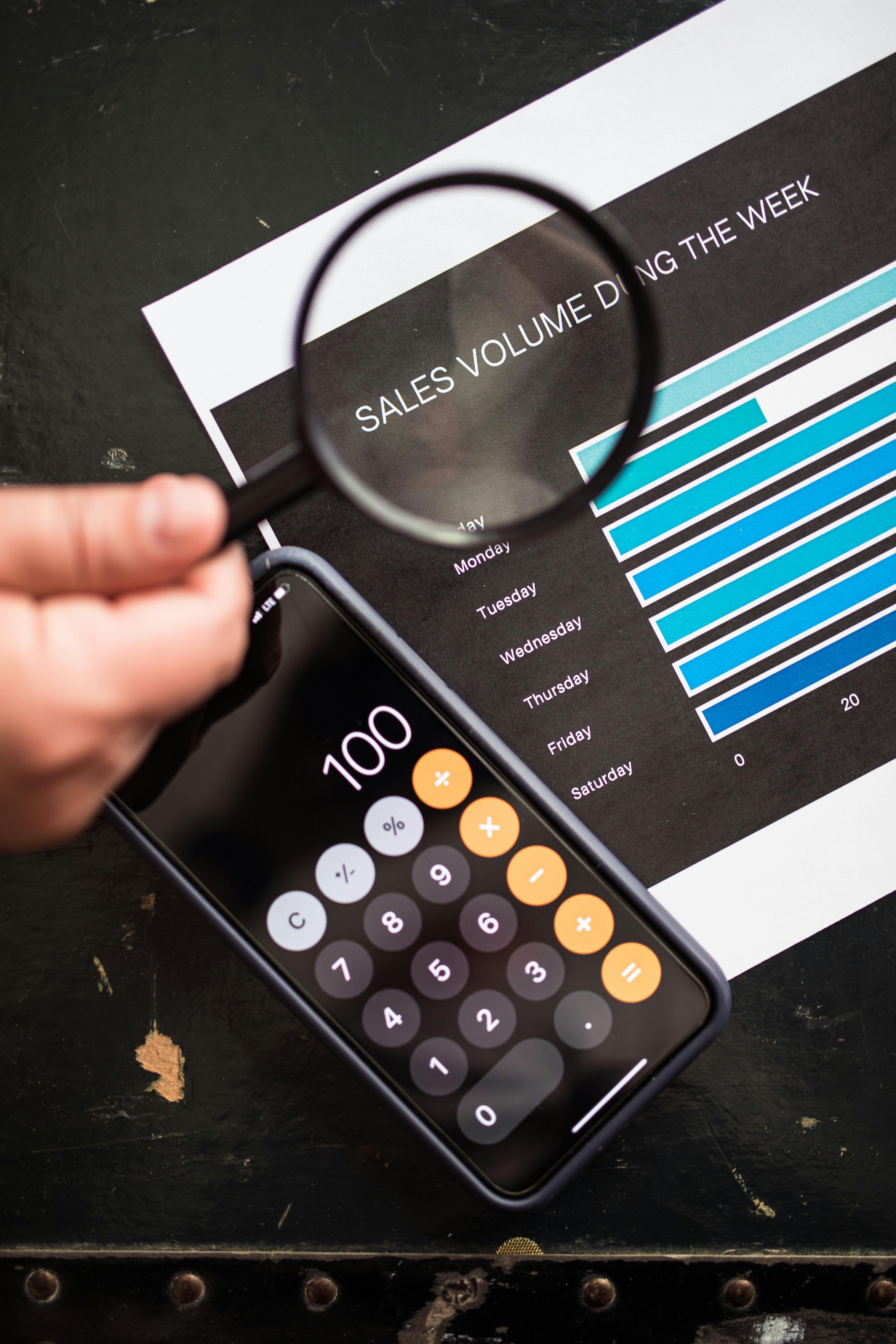The Future of Credit Monitoring in 2025: How AI Protects Your Financial Identity
In 2025, credit monitoring has evolved from a simple score-tracking service into a powerful shield powered by artificial intelligence (AI). Your credit score is no longer just a number — it’s a living reflection of your digital identity, constantly analyzed and protected by smart algorithms that learn your financial behavior in real time.
With fraud and identity theft rising in the U.S., AI has become the ultimate guardian. It doesn’t just alert you to suspicious activity — it predicts it before it happens. This shift is transforming how Americans view credit, risk, and financial security altogether.

💳 Why Credit Monitoring Needed an Upgrade
For decades, traditional credit monitoring tools relied on static data — monthly score updates, outdated reports, and reactive alerts. The problem? Fraudsters move faster than humans can respond. By the time a consumer gets an alert, their identity may already be compromised.
Enter AI-driven credit monitoring. By using behavioral analytics, anomaly detection, and predictive models, these new systems monitor transactions 24/7 — spotting suspicious activity within seconds.
🚨 Real-Time Protection for the Digital Era
Modern AI tools analyze hundreds of micro-patterns across your accounts — like login locations, spending frequency, and device signatures — to determine if activity is legitimate. If something looks off, AI instantly freezes or flags the transaction before any damage occurs.

This real-time approach has cut average fraud response times from 48 hours to less than 3 minutes, according to recent studies by the Federal Trade Commission (FTC).
How AI Actually Monitors Your Credit in Real Time
AI-based credit monitoring works by connecting to multiple financial sources — credit bureaus, banks, and fintech apps — to build a unified, real-time profile of your financial behavior.
🔍 Step 1: Continuous Data Integration
Instead of waiting for monthly updates, AI pulls live data streams from Experian, TransUnion, and Equifax. It then uses natural language processing (NLP) to interpret unstructured data from your loan or bank statements.

🤖 Step 2: Behavioral Analysis and Pattern Learning
Machine learning algorithms continuously study your habits — your spending limits, repayment consistency, and credit usage. If your credit card is suddenly used in another country or a large purchase appears out of pattern, the system flags it instantly.
These systems improve over time. The more data they process, the better they become at identifying subtle anomalies that traditional systems would miss.
🧠 Step 3: Predictive Risk Modeling
Predictive AI goes beyond detection — it forecasts potential issues before they occur. It can estimate the likelihood of future late payments or even predict if your credit utilization might hurt your score next month.

This allows lenders to make smarter decisions — and gives consumers the chance to act before a problem escalates.
In short, AI doesn’t just watch your credit — it understands it, protects it, and adapts to it.
AI vs. Credit Fraud — How Technology Outsmarts Hackers
Credit fraud isn’t slowing down — it’s getting smarter. In 2025, hackers use advanced phishing attacks, fake loan applications, and synthetic identities to target millions of Americans. The only defense powerful enough to stop them? Artificial intelligence.
Unlike human analysts, AI systems can detect micro-anomalies across millions of transactions in milliseconds. They look for unusual combinations — like a new account being opened from a suspicious IP or multiple loan inquiries in one hour.

🔒 1. Identity Verification and Biometric AI
AI-powered verification now includes facial recognition, voice matching, and keystroke dynamics. When a user logs into a financial app, AI checks biometric signals to ensure the real account holder is present.
This method blocks over 92% of attempted identity thefts before they can cause damage, according to a 2025 study by the Consumer Financial Protection Bureau (CFPB).
🧩 2. Detecting Synthetic Identities
Fraudsters often combine real and fake data to create new "synthetic identities." These identities are almost impossible for traditional systems to detect — but AI models use deep pattern recognition to expose them.
By comparing behavioral signals across platforms, AI can tell when an identity doesn’t align with normal human financial activity — like inconsistent spending or irregular credit inquiries.

🧠 3. Self-Learning Defense Systems
AI credit defense systems operate like immune systems — they evolve as threats evolve. When a new type of fraud is detected, the algorithm learns from it and updates itself across all connected networks.
This self-learning mechanism ensures that every time a hacker fails, the entire ecosystem becomes stronger.
The Best AI Credit Monitoring Platforms in the U.S. (2025 Edition)
Not all credit monitoring services are created equal. Here are the top platforms that lead the AI revolution in financial identity protection — combining real-time insights, predictive analytics, and user-friendly dashboards.
1. Experian Boost AI
Experian has fully integrated AI-based credit tracking in 2025. It uses behavioral AI to detect fraud and helps users boost their scores using on-time payments for streaming, utilities, and subscriptions.

2. Credit Karma Insight
Credit Karma’s new AI engine goes beyond score monitoring. It predicts potential credit dips and recommends corrective actions like balance redistribution or early payments — before your score is affected.
In 2025, it became one of the first apps to offer “proactive score protection,” alerting users about possible changes two weeks in advance.
3. IdentityGuard Quantum
IdentityGuard uses deep AI learning models to detect suspicious credit applications instantly. Its real-time notification system connects directly with credit bureaus and banks to freeze fraud attempts before approval.

4. Aura Shield 2.0
Aura leverages generative AI to create personalized protection plans. It can simulate how your credit score would react to specific actions, like opening a loan or missing a payment.
This predictive simulation feature makes Aura stand out as the most “educational” credit protection app in the U.S. for 2025.
🌍 5. The Future — Fully Autonomous Credit Systems
Looking ahead, AI will manage credit profiles automatically — optimizing usage, managing payments, and preventing risk before humans even notice.
Within a few years, we may see self-correcting credit profiles that balance utilization, prevent score drops, and interact directly with banks on your behalf.

AI won’t just monitor credit — it will master it.
Old vs. New — The Evolution of Credit Monitoring Systems
Credit monitoring has come a long way. What once required monthly updates and manual checks is now a fully automated, AI-powered experience. Let’s compare how the old systems stack up against the new AI-driven revolution of 2025.

🕰️ Old System: Reactive and Delayed
- Relied heavily on manual checks from credit bureaus.
- Alerts were often delayed by days or weeks.
- Users had to dispute issues themselves, often through complex forms.
- Limited to static reports that didn’t adapt to changing behavior.
Result? Fraud often went unnoticed, and credit damage was discovered only after it was too late.
⚡ New AI System: Predictive and Adaptive
- Analyzes millions of data points per second.
- Automatically detects, flags, and blocks suspicious activities.
- Uses predictive modeling to warn users of potential risks in advance.
- Offers automated dispute management — AI can draft and send your dispute letters.
AI credit systems in 2025 operate with over 98% accuracy in detecting irregular patterns, making them nearly foolproof for consumers and lenders alike.

📊 Key Differences in Numbers
| Feature | Old System | AI System (2025) |
|---|---|---|
| Fraud Detection Time | 48–72 Hours | Under 3 Minutes |
| Accuracy Rate | 65% | 98.5% |
| User Involvement | Manual | Automated |
| Cost Efficiency | High | Low |
| Score Update Frequency | Monthly | Real-time |
In short: what used to be a stressful, time-consuming process has now become a seamless, AI-managed safety net for every American consumer.
Real-Life Case Studies — How AI Saved Consumers from Financial Disaster
To understand the real power of AI-driven credit monitoring, let’s look at a few real-world stories from 2025 that showcase how these systems prevented major financial losses.
📍 Case Study #1: The Identity Swap That Never Happened
Scenario: Emily, a nurse from Texas, almost became a victim of identity theft when a hacker attempted to open two credit cards under her name. Her AI-powered credit app noticed an anomaly — the applications came from an IP in Eastern Europe.
Outcome: The AI system immediately froze her profile, verified her identity through facial recognition, and alerted her within 90 seconds. No accounts were opened, and her credit score remained intact.

💡 Case Study #2: Predicting a Credit Drop Before It Happened
Scenario: David, a small business owner, had several credit cards with high utilization. The AI algorithm detected an early risk of a score drop and notified him one week in advance.
Outcome: By making two small payments and adjusting his spending, David prevented his credit score from dropping by 40 points — saving him from higher interest rates on a future loan.
🧠 Case Study #3: Detecting Synthetic Identity Fraud
Scenario: A fraudster used a blend of real and fake data to create a “synthetic” profile under Michael’s Social Security Number. Traditional systems couldn’t catch it — but AI’s behavioral model detected inconsistent spending patterns and an unusual location history.
Outcome: The AI flagged the anomaly, automatically notified the bank, and blocked all fraudulent applications before they reached approval.

✨ The Common Thread
All these stories share a pattern — speed, accuracy, and adaptability. AI systems can now detect irregularities that humans would take days or even weeks to identify. They protect not just your score, but your entire financial identity.
By 2026, experts predict that over 80% of all credit monitoring systems in the U.S. will use AI as their primary fraud prevention engine.
Consumer Benefits — How AI Credit Monitoring Empowers Americans
AI-based credit monitoring doesn’t just protect consumers — it empowers them. Instead of reacting to fraud or bad credit decisions, users can now proactively manage their financial health like professionals. Let’s break down the major benefits real users experience daily.

💡 1. Real-Time Credit Insights
Gone are the days of monthly reports. AI updates your credit score in real time, showing how each financial decision — from paying a bill to using a new credit card — affects your score instantly.
- ✔ Track every financial move as it happens.
- ✔ Receive instant notifications for score changes.
- ✔ Get personalized suggestions to maintain excellent credit.
This level of transparency helps Americans stay informed and avoid hidden surprises that damage scores.
⚙️ 2. Automated Dispute and Repair
One of the biggest frustrations in credit management used to be disputing inaccurate records. Now, AI tools can automatically identify errors, draft dispute letters, and communicate with bureaus on your behalf — often within minutes.

In 2025, tools like Experian Boost AI and Credit Karma Insight have automated over 70% of all user disputes, leading to faster corrections and higher user satisfaction.
🔔 3. Predictive Alerts — Before Problems Happen
Instead of waiting for fraud to occur, predictive AI warns users in advance. For instance, if your utilization ratio is about to exceed 30%, you’ll receive a message suggesting how much to pay down before the next billing cycle.
This proactive guidance turns every user into a financially aware decision-maker — improving overall credit culture nationwide.
🧩 4. Holistic Financial View
AI credit systems now connect with bank accounts, investment portfolios, and budgeting apps. That means consumers no longer see their credit in isolation — they see the entire financial ecosystem working together.
Users can track how paying off a car loan impacts their mortgage eligibility, or how their savings improve their creditworthiness.

📈 5. Smarter Decision-Making
AI doesn’t just provide data — it explains it. Through visual dashboards and personalized insights, users can clearly see why their credit score moves, and what they can do to improve it.
For millions of Americans, that clarity turns financial stress into confidence — and knowledge into savings.
Challenges and Ethical Concerns in AI Credit Monitoring
While AI is transforming the credit industry, it also raises important ethical and technical challenges. To build a truly fair and secure credit ecosystem, we need to address these issues head-on.
⚠️ 1. Data Privacy and Over-Surveillance
AI relies on constant data collection — which means more personal information is being processed than ever. Consumers worry about how their financial and behavioral data are used, stored, and shared.

Regulators like the Federal Trade Commission (FTC) are introducing new guidelines to ensure data transparency, requiring AI firms to clearly explain how algorithms make credit decisions.
🤖 2. Algorithmic Bias
AI is only as fair as the data it’s trained on. If historical data contains bias — such as regional or demographic disparities — the AI might unintentionally replicate those patterns.
For example, certain zip codes may historically have lower credit averages, leading AI to predict higher risk unfairly.
To combat this, major firms are introducing Fair AI Models that remove sensitive factors and undergo third-party audits to ensure ethical fairness in predictions.
🔐 3. Cybersecurity Risks
As systems become smarter, hackers become bolder. The centralized nature of AI credit platforms can attract massive cyberattacks — especially since they hold millions of Social Security Numbers and financial histories.

To counter this, new encryption methods like Quantum-Resistant Security are emerging, making data nearly impossible to decode even with advanced computing power.
🧠 4. The Human Element
AI is fast and efficient, but sometimes, human judgment is irreplaceable — especially in nuanced cases like credit disputes or special lending scenarios.
Leading platforms are blending AI precision with human expertise, creating a hybrid system where algorithms handle data — and humans handle empathy.
🌍 5. The Balance Between Automation and Accountability
Automation should empower consumers, not control them. That’s why future AI systems are focusing on giving users control over their own data — allowing them to opt in, manage permissions, and delete data on demand.
When humans and AI collaborate, credit systems become not only smarter — but also fairer and more humane.
Expert Insights — What Financial Leaders Predict Beyond 2025
As AI continues to revolutionize credit monitoring, industry leaders and economists believe we’re entering an era where financial identity becomes fully intelligent. Let’s look at what experts and major financial institutions foresee for the next decade.

💬 1. “Credit Will Become Autonomous” — Mark Reynolds, FinTech Economist
According to Reynolds, by 2030, consumers won’t need to monitor credit manually. AI will handle credit optimization, bill payments, and fraud prevention automatically — almost like an autopilot for your financial life.
He explains: “AI won’t just react to credit changes — it will forecast them and adjust behaviors in real time. People will wake up one day and realize they haven’t checked their credit score in months, yet it’s never been higher.”
🧠 2. “Your Credit Score Will Be Personalized and Dynamic” — Laura Chen, Chief Data Scientist at Experian
Laura predicts that credit scoring will evolve from static numbers to adaptive profiles that reflect live financial behavior. AI will analyze factors like spending rhythm, savings discipline, and even digital reputation to build real-time credibility scores.
This means that creditworthiness will no longer be frozen in time — it will adapt every second to your actions.

🏦 3. “Banks Will Compete on AI Ethics” — Rachel Lopez, Federal Reserve Analyst
Rachel foresees a major shift: in the future, financial institutions won’t compete only on interest rates or rewards — they’ll compete on how ethically transparent their AI models are.
Consumers will choose banks not just for services, but for the trustworthiness of their AI algorithms. “People will ask: does this bank’s AI respect my privacy and my humanity?”
🌍 4. “Global AI Credit Ecosystems Will Merge” — Dr. Ahmed Al-Fayez, Digital Finance Researcher
Dr. Al-Fayez predicts the rise of an international AI credit network by 2030, linking American, European, and Asian credit systems. This will allow global citizens to carry one unified digital financial identity anywhere they go.
That means your AI credit profile could travel with you from New York to Dubai to Tokyo — instantly recognized, updated, and protected by decentralized systems.

The Future Vision — From Credit Monitoring to Financial Guardianship
The story of credit monitoring isn’t just about technology — it’s about evolution. AI is no longer a tool; it’s becoming a guardian of financial stability.
🔮 The Rise of “Financial Guardianship”
By 2030, AI will not simply monitor — it will manage. Imagine your financial AI assistant automatically paying your bills, balancing your accounts, reducing debt exposure, and even negotiating better loan rates — all while you sleep.
Financial institutions are already building prototypes of Autonomous Credit Guardians (ACG) — systems that handle every aspect of credit, spending, and saving using predictive intelligence.

⚖️ Transparency, Trust, and Human Balance
The only way this future succeeds is through trust and regulation. AI must remain explainable, auditable, and fair. Transparency will be key — people must know why an algorithm made a credit decision, not just accept it blindly.
Financial guardianship doesn’t mean losing control. It means sharing control — where AI does the heavy lifting, and humans make informed choices.
🌟 Empowering the Next Generation
For younger Americans, AI credit systems will serve as personal mentors — guiding them toward smarter money habits, healthy debt ratios, and sustainable credit growth.
In classrooms and digital banks, financial literacy programs will include AI dashboards that teach users how to “train their algorithms” to reflect responsible spending.
🚀 Final Thought: The Human + AI Alliance
The fusion of AI and finance marks a defining shift in history. Credit monitoring has evolved from static reports to living ecosystems — predictive, protective, and personal.
In this new era, the best credit score won’t just belong to those who earn more — it’ll belong to those who understand their AI better.

Welcome to the age of AI-empowered financial identity — where your data becomes your defense, your AI becomes your ally, and your future becomes your own design.
